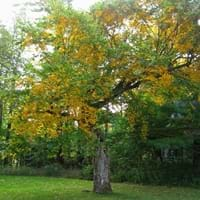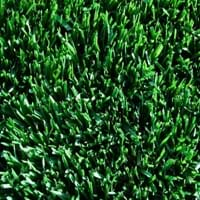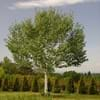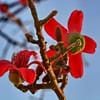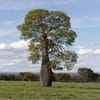Life Span
Perennial
Perennial
Origin
Northeastern United States, Mid-Atlantic United States, North-Central United States, Central United States, Canada
World/Pandemic, North America, Europe
Types
it is a type of birch
Alene, Barblue, Caliber, Canterbury
Habitat
Hillside, Mountain tops
Cultivated Beds, Lawn, meadows
USDA Hardiness Zone
4-7
3-10
Sunset Zone
A3, 1a, 1b, 2a, 2b, 3a, 3b, 4, 5, 6, 7, 14, 15, 16
A1, A2, A3, 1a, 1b, 2a, 2b, 3a, 3b, 4, 5, 6, 7, 8, 9, 10, 11, 14, 15, 16, 17, 18, 19, 20, 21, 22, 23, 24
Habit
Pyramidal
Mat-forming
Minimum Width
Not Available
Flower Color
Light Yellow, Light Green
Purplish Green
Flower Color Modifier
Bicolor
Bicolor
Fruit Color
Bronze, Sandy Brown
Not Available
Leaf Color in Spring
Green, Dark Green
Green, Blue Green, Gray Green
Leaf Color in Summer
Dark Green
Light Green
Leaf Color in Fall
Yellow
Green, Blue Green, Gray Green
Leaf Color in Winter
Not Available
Green, Blue Green
Leaf Shape
Oval
Narrowly linear
Plant Season
Spring, Summer, Fall, Winter
Spring, Summer, Fall
Sunlight
Full Sun, Partial Sun
Full Sun, Partial Sun, Partial shade
Type of Soil
Clay, Loam
Clay, Loam
The pH of Soil
Acidic, Neutral
Acidic, Neutral
Soil Drainage
Average
Well drained
Bloom Time
Early Spring
Summer
Tolerances
Not Available
Not Available
Where to Plant?
Ground
Ground
How to Plant?
Seedlings
Seedlings, Sod
Plant Maintenance
Medium
Medium
Watering Requirements
Average Water Needs, Do Not over Water
Water frequently while growing
In Summer
Lots of watering
Lots of watering
In Spring
Moderate
Moderate
In Winter
Average Water
Average Water
Soil pH
Acidic, Neutral
Acidic, Neutral
Soil Type
Clay, Loam
Clay, Loam
Soil Drainage Capacity
Average
Well drained
Sun Exposure
Full Sun, Partial Sun
Full Sun, Partial Sun, Partial shade
Pruning
Prune to half of its height
Remove damaged leaves, Remove dead branches, Remove dead leaves
Fertilizers
All-Purpose Liquid Fertilizer, fertilize twice a year
Nitrogen
Pests and Diseases
Borers, Chlorosis
Dollar spot, Rust, Summer Patch
Plant Tolerance
Not Available
Drought
Flowers
Insignificant
Insignificant
Flower Petal Number
Not Available
Single
Fragrant Bark/Stem
Yes
No
Foliage Texture
Medium
Fine
Foliage Sheen
Matte
Matte
Attracts
Not Available
Insects
Allergy
Respiratory problems, Skin rash
Cough, Itchy eyes, Runny nose
Aesthetic Uses
Landscape Designing, Showy Purposes
Ground Cover
Beauty Benefits
Not Available
Not Available
Environmental Uses
Air purification, Shelter for wildlife
Erosion control
Medicinal Uses
No Medicinal Use
Not Available
Part of Plant Used
Bark, Sap
Leaves
Other Uses
Edible syrup, used for making charcoal, Used for making wood alcohol, Used in Furniture
Used in lawns and turf
Used As Indoor Plant
No
No
Used As Outdoor Plant
Yes
Yes
Garden Design
Feature Plant, Shade Trees
Lawns and Turf
Botanical Name
BETULA alleghaniensis
POA pratensis
Common Name
Yellow Birch
Kentucky Bluegrass
In Hindi
Yellow Birch
Kentucky Bluegrass
In German
Yellow Birch
Kentucky Bluegrass
In French
bouleau jaune
Kentucky Bluegrass
In Spanish
Abedul amarillo
Pasto azul de Kentucky
In Greek
κίτρινο Birch
Κεντάκυ Bluegrass
In Portuguese
κίτρινο Birch
Kentucky Bluegrass
In Polish
żółte brzozy
Wiechlina
In Latin
Birch flavum
Kentucky Bluegrass
Phylum
Magnoliophyta
Magnoliophyta
Class
Magnoliopsida
Liliopsida
Family
Betulaceae
Poaceae
Clade
Not Available
Angiosperms, Commelinids, Monocots
Tribe
Not Available
Poeae
Subfamily
Not Available
Pooideae
Number of Species
Not Available
Importance of Yellow Birch and Kentucky Bluegrass
Want to have the most appropriate plant for your garden? You might want to know the importance of Yellow Birch and Kentucky Bluegrass. Basically, these two plants vary in many aspects. Compare Yellow Birch and Kentucky Bluegrass as they differ in many characteristics such as their life, care, benefits, facts, etc. Every gardener must at least have the slightest clue about the plants he wants to plant in his garden. Compare their benefits, which differ in many ways like facts and uses. The medicinal use of Yellow Birch is No Medicinal Use whereas of Kentucky Bluegrass is Not Available. Yellow Birch has beauty benefits as follows: Not Available while Kentucky Bluegrass has beauty benefits as follows: Not Available.
Compare Facts of Yellow Birch vs Kentucky Bluegrass
How to choose the best garden plant for your garden depending upon its facts? Here garden plant comparison will help you to solve this query. Compare the facts of Yellow Birch vs Kentucky Bluegrass and know which one to choose. As garden plants have benefits and other uses, allergy is also a major drawback of plants for some people. Allergic reactions of Yellow Birch are Respiratory problems and Skin rash whereas of Kentucky Bluegrass have Cough, Itchy eyes and Runny nose respectively. Having a fruit bearing plant in your garden can be a plus point of your garden. Yellow Birch has no showy fruits and Kentucky Bluegrass has no showy fruits. Also Yellow Birch is not flowering and Kentucky Bluegrass is not flowering . You can compare Yellow Birch and Kentucky Bluegrass facts and facts of other plants too.
